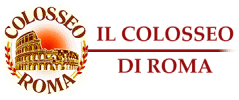Palatine Hill
Visit the Palatine Hill
A visit to the Palatine Hill is one of the most exciting experiences you can have in Rome. We recommend that you book a guided tour to fully enjoy it, which takes some time to fully appreciate, so we recommend that you devote at least one morning or a full afternoon to it.
The Roman Forum and Mount Palatine
What to see in the palatine area
The Palatine Hill preserves the remains of Iron Age settlements, which form the oldest core of the city of Rome. The hill has hosted important city cults, including that of the Magna Mater. In the 2nd and 1st centuries BC. , it became the residential quarter of the Roman aristocracy, built elegant mansions characterized by exceptional pictorial and floor decorations, including the House of the Gryphons. Augustus symbolically chose the hill as the site of his home, consisting of several buildings, including the House of Livia. Later the hill became the site of imperial palaces, such as the Domus Tiberiana, the Domus Transitoria, the Domus Aurea, and finally the Domus Flavia, divided into a public and private sector, known as the Domus Augustana. Complex and overlapping floor plans show how the various residences were interconnected, including through often highly decorated underground corridors, such as the Neronian Cryptoporticus, one of the best preserved. The presence of the imperial palaces created a strong identification and the toponym Palatium has become synonymous with residential building in modern languages.
The Imperial Forums - The Residences of the Emperors
The House of Augustus with the great Temple of the god Apollo and the House of Livia, residence of the wife of the first Roman emperor was built on the Palatine Hill. So it was natural for his successors to choose the Palatine Hill as their home. In fact, later the Palace of Tiberius was built, expanded by Caligula, that of Nero (the Domus Transitoria), the Palaces of the Flavians with the Domus Flavia and the Domus Augustana, and finally the last additions made by Septimius Severus. By the end of the imperial age, the hill was completely occupied by one huge building that constituted the entire residence of the emperors.
Opening Hours:
Open daily, Monday through Sunday from 9:00 a.m. to 4:30 p.m.
Last entry one hour before Closing.
Directions:
-Tram: no. 3
-Metro: Line B stop Colosseo
-Bus: no. 51, 75, 81, 85, 87, 118
Reviews
The Roman Forums are a must-see for anyone who wants to learn more about the grandeur of ancient Rome. The beauty and majesty of its monuments make the experience of the visit unique and unforgettable.
The Roman Forum is a magical place that offers the opportunity to fully immerse oneself in the life of ancient Rome. The tour guide who accompanied us on the tour was incredibly knowledgeable and gave the historical information in an engaging and interesting way.
Visiting the Roman Forum was one of the highlights of my vacation in Rome. Admiring the Arch of Titus and the Curia, among other monuments, made me feel a bit like I was in the middle of the Roman Empire.
The Roman Forums offer breathtaking panoramic views of the city and its history. The view of the Capitol, in particular, was one of the most exciting moments of the visit.
The visit to the Roman Forum was an educational and evocative experience. Being surrounded by the history of ancient Rome made me feel very humbled and gave me a great sense of respect for the greatness of Roman civilization and its empire.
